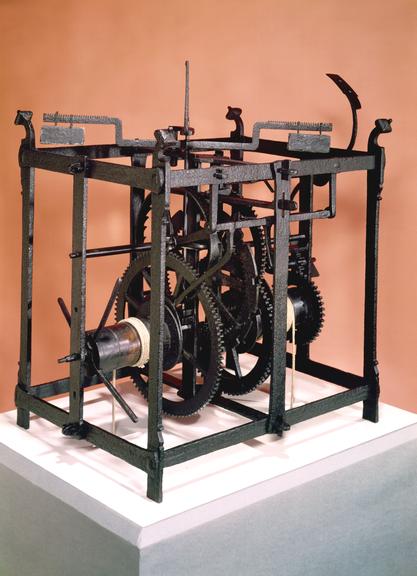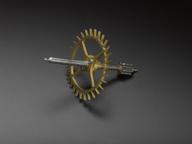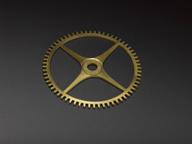


Striking turret clock with original foliot balance and crown wheel escapement made between 1632 and 1640 in London. The clock was found at Dover Castle in 1872.
This is one of the few surviving public clocks that still uses its original foliot balance for its time control. Most foliot clocks were converted to pendulum control in the 1600s. A foliot balance is a horizontal weighted bar which is pushed in one direction (a ‘tick’) and then the other (a ‘tock’) by a crown-shaped toothed wheel, pulled round by a falling weight. The crown-shaped wheel is part of an ‘escapement’. The potential energy in the falling drive weight is allowed to escape a little at a time. All mechanical clocks have some form of escapement. This clock was probably made in London at the workshop of Leonard Tennant by one of his apprentices. It was found at Dover Castle in 1872 and became known as the 'Dover Castle turret clock'.
Details
- Category:
- Time Measurement
- Object Number:
- 1884-81
- Measurements:
-
overall (estimate): 890 mm x 580 mm x 575 mm, 93 kg
- type:
- turret clock and weight-driven foliot clock
- credit:
- On loan from English Heritage




